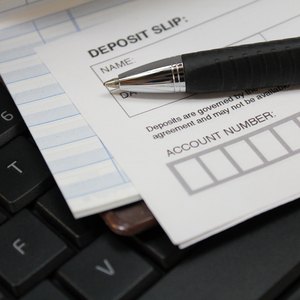
A typical deposit slip, which may be referred to as deposit ticket, is presented to the bank via your local branch or some teller machines, together with a check or cash payment to help transfer funds to the designated financial institution’s accounts, such as a savings account. The slips are usually available at the back of your checkbook. But if your deposit slips are missing, you can inquire with the teller about getting some.
Deposit slips usually contain information concerning the depositor of the funds and the deposit amounts. But they also contain many other important terms, such as “less cash.”
What Does “Less Cash” on a Deposit Slip Mean?
“Less cash” on a deposit slip indicates the amount of money you would like in cash from the total deposit written on the slip. It is what you get on the spot, while the rest of it gets deposited into your checking account. For example, if you deposit a total of $500 and state $200 on the "less cash" section, you will get $200 back and deposit $300.
You’ll find the "less cash" section on the lower right-hand corner of your deposit slip, underneath the subtotal amount.
Other Important Terms on a Deposit Slip
Your deposit slip may bear your bank name, routing number, branch and address at the bottom left-hand corner. This information helps identify the exact financial institution it comes from. In addition, it contains many terms whose meanings and implications you should understand, including:
- Currency or cash: Found on the upper right-hand corner of the deposit slip, this term refers to the cash in the form of coins and bills that you are depositing.
- Checks: Found on the upper right-hand corner of the slip, this term refers to the amount of the check you are depositing.
- Subtotal: Found on the lower right-hand corner of the deposit slip, this term refers to the sum of the currency and checks being deposited.
- Net deposit or total deposit: Found on the lowest left-hand corner of the deposit ticket, this term refers to the amount of money that you actually deposit. It is calculated as the total of any checks minus any cash you take when the deposit is made.
- Date: Found on the top left-hand side of the deposit slip, this term refers to the date on which you are carrying out the cash deposit transaction or when you deposit the checks. So, it must be current.
- Name: This is the official name of the person depositing the funds. It must match your government identification documents or the account name in the financial institution.
- Account number: This term term refers to the numbers your credit union or bank assigned to your account.
- Signature: This term indicates where you are to sign the deposit slip, especially if you will withdraw cash.
How to Fill Out a Bank Deposit Slip
You can follow the steps below to fill out your bank deposit slip.
- Find a slip. Find out whether you have a bank deposit slip at the back of your checkbook. If not, inquire at your local bank. Typically, these slips are available at bank counters. However, if you regularly make check deposits, consider getting pre-printed slips with your bank account name and number already on them to save you time and prevent mistakes.
- Fill in the information. Fill in the personal information sections of the bank account holder for whom the deposits are being made. If you can’t remember your account number and the routing number, refer to your checkbook, ATM card or online bank account. On the other hand, if you are depositing for someone else, ensure that they fill in their personal information before you take the slip to the financial institution that they do business with. Further, the date must be current, not the one on the checks.
- Do the math. Ensure that you include the amount of bills and coins you are depositing in the currency section in dollars and cents. Then list the checks you are also depositing, one after the other, in the check section. After that, add up the subtotals and subtract the cash back amount in the “less cash” section that you want on the spot to get the total to be deposited. The Office of the Washington State Auditor advises organizations to reconcile daily deposits by thoroughly listing all the cash and check amounts. That way, what appears on the slip matches what’s in the bank account. So, you should ensure that the amounts you list match what’s going into your bank account too.
- Complete and submit. Complete the slip by signing it before submitting it with the cash and checks to be deposited.
According to the Consumer Financial Protection Bureau (CFPB), sometimes banks may credit your account an amount different from what you deposited due to a discrepancy in the numbers on the deposit slip compared to the cash you transfer. So, ensure that you get a copy of your deposit slip to act as an additional receipt and help you keep track of what’s going into your account.
You can use it as a reference point if a dispute with the totals arises. However, you can also opt for other deposit methods that don’t need a deposit slip, such as debit cards, money orders, credit cards and direct deposits.
References
Writer Bio
I hold a BS in Computer Science and have been a freelance writer since 2011. When I am not writing, I enjoy reading, watching cooking and lifestyle shows, and fantasizing about world travels.

